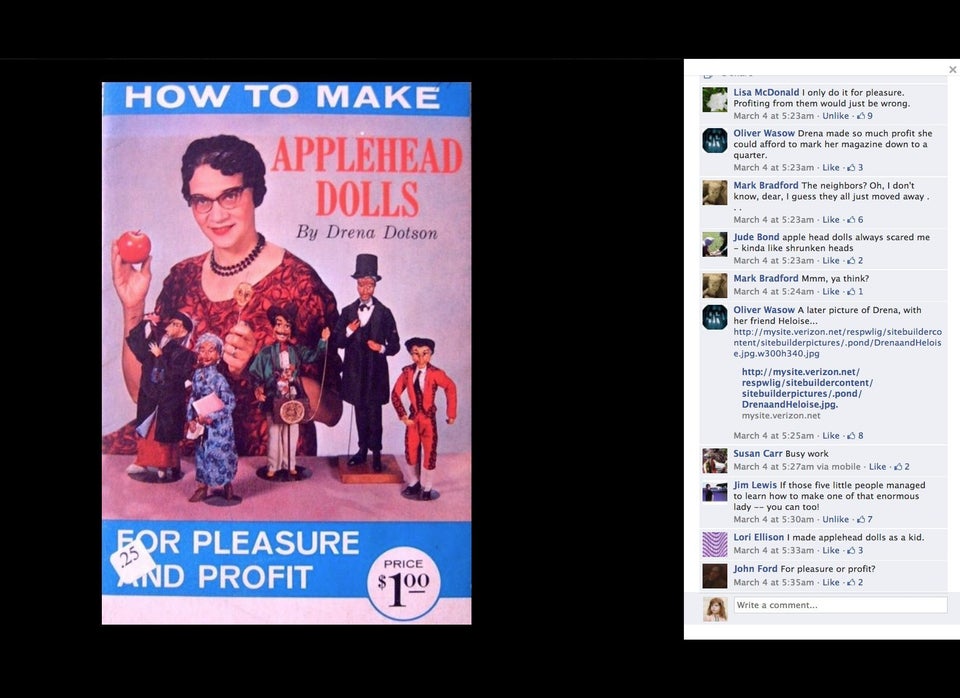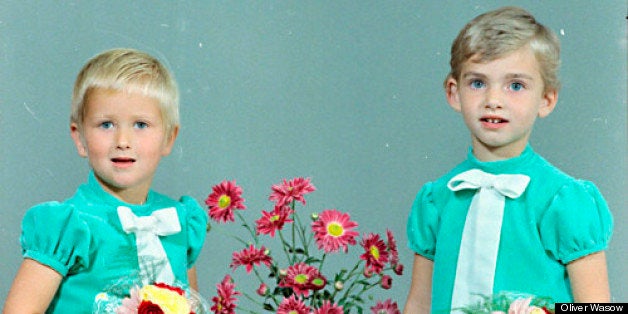
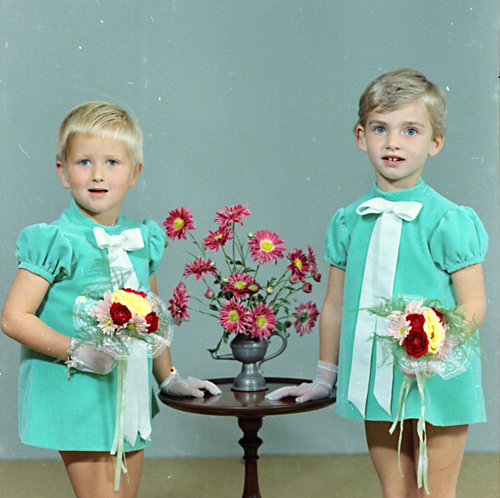
Untitled, Artist Unknown
For the past five years I have seen between five and twenty gallery exhibitions per week, every week, driving all over Los Angeles from the Westside to downtown, to Miracle Mile, to Hollywood, searching out the most interesting shows. Recently I found myself going a little less often, but I haven't been seeing less art, I've just been seeing more of it online. With the proliferation of social media platforms, artists are finding new ways to display the work they are creating. To be clear, I am not advocating online viewing as a replacement for work that has traditionally been exhibited in art galleries. While online art viewing has become almost essential for educational and referential purposes, it does not replace the primary experience that traditional art forms require in up close and personal observation. Instead I discovered that there is a sizable group of artists who find that social media platforms function as one of the more ideal ways in which to show their work.
Facebook is the platform that artists seem to be particularly drawn to. When I first got on Facebook, I hardly used it. I had no interest in connecting to friends from high school or spying on my ex. Then I discovered that a huge and diverse array of artists were using Facebook as a way to show their work, share information and have a discourse about the art world at large. New York Magazine's senior art critic, Jerry Saltz famously uses Facebook as a place for multi-voiced art criticism. It was on Saltz's Facebook page that I "met" Oliver Wasow. Wasow got my attention because his comments are not only super smart and insightful but often poke humorously at art world foibles. This led me to check out his artwork and daily postings. Every morning Wasow posts a found, un-authored photograph where a variety of his 2000+ friends comment. The comments are observations that often parallel pop culture, arts humor or politics as well as reflections of our current culture bumping up against past eras. I asked Saltz, who often comments on Wasow's postings, to talk a bit about this project:
What Oliver Wasow is doing on Facebook is using order to generate chaos -- which is what art's amazing alchemy is. He does it using non-material materiality, images that exist nowhere and everywhere. He then returns and melds these images to make them speak a non-verbal language. In a Rebus. If the art world doesn't let more of the world into it, the world will move on and not let art into the world. Oliver is already opening things up; discourse, ideas, horizontal platforms available to anyone who can see and what he's doing is more fun than a barrel of monkeys. He's as good an artist as any artist working today. Like all of us who have embraced the 40,000-headed beast of Facebook, there's no way to monetize it. Give him a MacArthur.
As part of his studio practice, Wasow occasionally posts work that use a combination of found images, original photography and digital manipulation. He creates original, surreal landscapes -- a hybrid of complex and diverse styles that can be reminiscent of the Hudson River School Painters or akin to a vintage movie still.
Below is the first of a two part conversation I had with Oliver Wasow, where we discuss the value of social media in art.
Tracey Harnish: You had a gallery in the 80's in the East Village, it seems like a long way to come, from being a gallerist to a proponent of Facebook, Pinterest and Tumblr as a place to see art. And too, I've seen you say in Facebook conversations, that you enjoy a lot more art on Tumblr than you do the art you see in galleries. I have to admit I agree with you and I still continue to see a lot of gallery shows. Do you think it's because the art and/or the art world has changed that you have come to this way of thinking? Or is it the way in which our society has changed, not only in the ways art making can now happen but also the speed in which we can view imagery, the abundance and variety of it?
Oliver Wasow: Well, even before the Internet I found that I was just as interested in looking at magazines, books, posters, etc., as I was in going to galleries, so I don't know that it's so much that the art world has changed and become less appealing to me as it is that the Internet provides me with access to an almost limitless archive of fascinating images to sort through. In the 80s and early 90s I shopped for old magazines and books and I spent a fair amount of time in the NY Public Library's picture collection. I was fascinated with the way in which the library chose to organize their archive. Today, sites like Flickr and Pinterest, and the hundreds of other image-sharing sites out there, have turned the Internet into an unbelievably vast archive of images and cultural detritus and, as I've always been more interested in reproducible media than in singular objects, it's really an irresistible playground for someone as obsessed with picture as I am.
It's important though to be clear, when one talks about looking at art online, people assume you mean looking at reproductions of traditional gallery-art, a jpeg of a painting or sculpture, and while I suppose there's a place for that, it's really not something that interests me. What does interest me are the ways in which individuals share, distribute, arrange and archive the stuff that is floating around out there on the Internet. I know that a lot of people have trouble with the word "curate" and I understand that to say everyone is a curator diminishes those that are "professional" curators, but the fact of the matter is that there are millions of people out there involved in the creative practice of organizing pre-existing material into configurations that have significant meaning for themselves and others. They're making art. Perhaps much of it isn't very interesting but one could say the same thing about art seen in galleries.
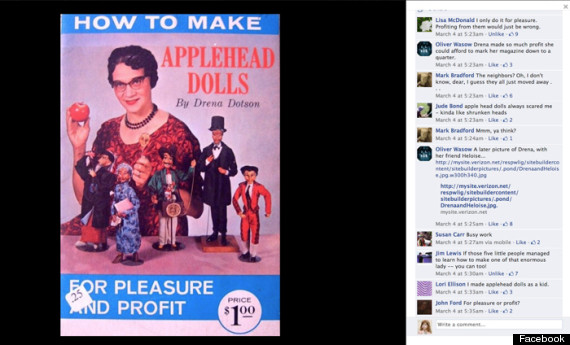
Facebook Screenshot of Untitled/Artist Unknown, photo with comments
TH: I've seen other artists post hundreds of images on Facebook, but I haven't come across anyone that manages to engage people the way you do. Often there are over a hundred comments on a found photo you've posted. The comments range from lots of joking, and I have to say you have some incredibly witty people commenting, to serious discussions about whether the photo has been altered in some way. In fact, you have a very educated, informed group of people coming to your posts daily. What do you think the consistent draw is to participate in this way?
OW: I'm not sure really. I suppose it has something to do with the kinds of images I choose to post. I try to put up images that have a certain degree of mystery to them and that encourage either speculation as to their origins or to their process. A lot of what I post are found vernacular photographs and I think people have a lot of fun imagining just what the original photographers had in mind when they took the pictures. These are pictures that have been divorced from their original context and been opened up to pretty much any kind of narrative one can imagine. I also tend to limit my posts to images drawn from the world of analog photography and this of course has a certain nostalgic appeal. The pictures are often exaggerated representations of our childhoods and may function in a kind of cathartic way, allowing us to laugh at what we've survived.
I post one image a day usually and I try to sequence the pictures in such a way that people recognize certain typologies and themes developing over time. Maybe it's a bit like being a DJ, I've developed a sense of what kinds of pictures generate discourse and try to create a rhythm with them that will surprises people and keep them engaged. And in the end of course it helps that I know a lot of smart and funny people on Facebook.
TH: You also create collaged photographic images that have a very filmic and even painterly quality to them. How do the found images you collect and share, intersect with this practice? Do you see any difference between the two? I remember seeing you comment in a thread on another's page, about the fact that you considered your daily postings of found photos as art. Can you speak about that more directly?
OW: My work has almost always incorporated some found source material into it so on the simplest level there is that similarity. I spend a lot of time looking for pictures that I can use in my own work and as this activity has shifted over onto the Internet it's put me in touch with a lot of incredible pictures. For the most part though, the kind of imagery I incorporate into my "studio practice" is very different than what I post online. For one thing, my studio work never has people in it and the work I post online almost always does. I've never really had an interest in using people in my work as I find they evoke a kind of emotional and temporal specificity that I don't like. Posting pictures online is a way for me to engage with photographs of people in a way that interests me.
The most significant difference between my studio practice and what I do online is that the former is born of an inward looking and personal impulse, and the latter is an activity dependent on the inherently collaborative nature of the Internet. In the end though, they are both a manifestation of my fascination with what happens when an image is removed from its original context and placed in another, they are activities born of a love/hate relationship to the authority of the photograph.
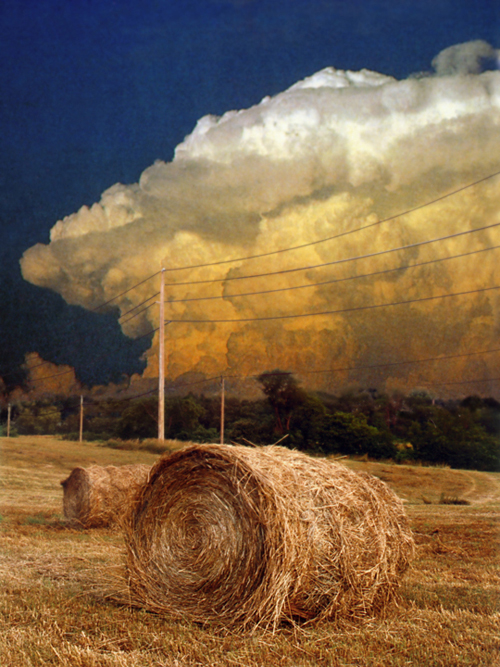
Hay, 1999, Courtesy of the Artist, Oliver Wasow
TH: There has been a lot of discussion lately within the art world about the death of the art gallery. You and I seem to agree that the so-called gallery is changing. If we don't limit our ideas of how art is defined to traditional objects to be sold from a gallery space, it seems pretty obvious that there are many options for viewing art and that more people are seeing art than ever before. Am I right in saying that you don't see this as an either/or situation but instead, see that different mediums are represented well in different places? Do you think galleries and online forums will ever be seen as equal in terms of legit places for art viewing?
OW: The first thing we need to do is expand our definition of what art is. Until people stop thinking as art as solely the product of one individual, creating something from nothing and putting it into a white room, we'll always have a kind of binary set-up between what we see in galleries and what we see on the Internet.
Of course this is very much an economic issue and galleries are about marketing singular objects, or limited editions, but once you remove that from the argument, there is really no reason at all why we can't consider all of the stuff out there floating around on the internet to be every bit as substantial and every bit as much art as anything else.
The Internet is by its very nature antithetical to a lot of things we traditionally associate with the gallery world. Most obviously, it doesn't pay a lot of attention to notions of individual authorship and object-hood, two of the staples of the traditional gallery system. But I think it's shortsighted to assume that the two worlds will never co-exist or intersect. They each employ radically different methods of distribution but in the end they are both a manifestation of visual culture, they are places to look at stuff.
TH: According to CNET, 300 million photos are uploaded to Facebook on a daily basis. The way art is being made and distributed is changing, as a culture of participation increases. We've come a long way from a time when the only way to discover art was through a magazine or newspaper article. Immediacy and accessibility of information have become the norm and continue to influence the dissolution of the walls that once separated varying types of artists, art making and exhibition. In the second part of our conversation, Wasow and I continue to discuss these issues in more detail.
On view now, an exhibition of vernacular photography found online by Oliver Wasow and John D. Monteith:
Artist Unknown/The Free World
Exhibition Dates: May 10 June 23, 2013
BYRDCLIFFE Kleinert/James Center for the Arts, 36 Tinker St, Woodstock NY
For more information click here.
To purchase the Artist Unknown/The Free World exhibition catalog, go here.

